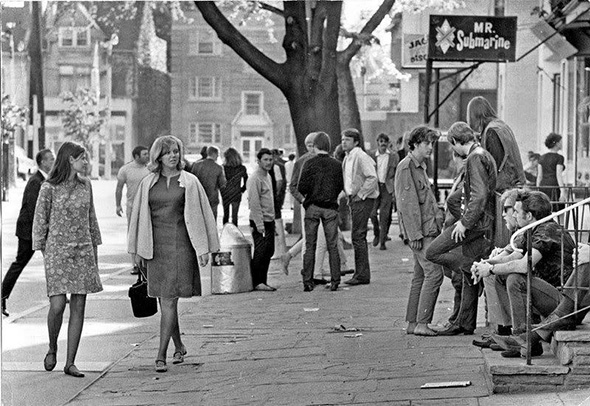
When I say Yorkville, what's the first thing that comes to mind? Hippies? Free love? Psychedelic rock? Unlikely these days. Now the area is a high end shopping haven. Home to the "Mink Mile," the neighbourhood was declared the 7th most expensive retail space in North America in 2008. But this was not always the case.
In the 1960s, Yorkville was not a hub for the extravagant shopper, but a sanctuary for the counterculture movement in Canada - an equivalent to New York's Greenwich Village.
The Village of Yorkville was established in 1830 by Joseph Bloore and William Jarvis as a suburban retreat. In 1883 the village was annexed by the city of Toronto and continued for the next 80 years as a quaint residential neighbourhood lined with Victorian-style homes.
By the 1960s, Yorkville had transformed into the nucleus of hippie culture.
The cheap cost of rent in Yorkville led many German and English immigrants to buy property in the area. The charming, but now neglected Victorian homes were converted into coffee houses. At the time, the drinking age in Ontario was 21, and these venues provided an alternative gathering space for Toronto's young, hip crowd.
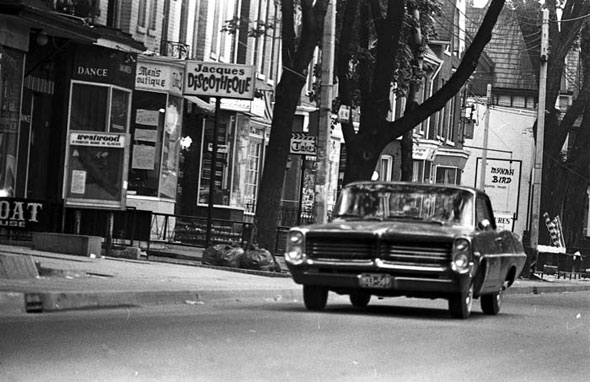
The '60s was a vibrant era in Toronto's history. The spirit of revolution was celebrated through nonconformity, creativity, drug and sexual exploration. Yorkville was at the heart of it all.
By the late 1960s a network of up to 40 clubs and coffee houses dotted the Yorkville scene. Talent was expressed in all forms; poetry readings, art showings, fashion boutiques, and above all, live music. People from all over Canada - and North America - traveled to the once quiet streets to experience the bustle of the neighbourhood.
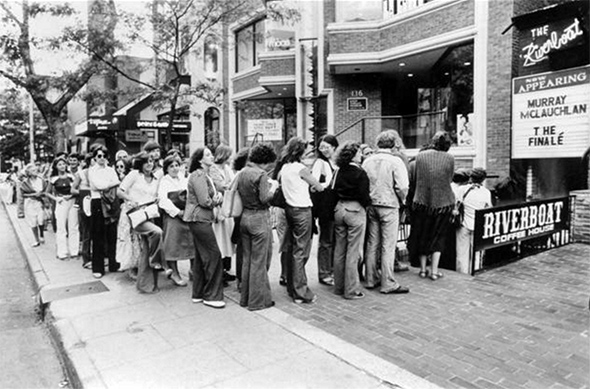
The most iconic club during this era was the Riverboat Coffeehouse at 134 Yorkville. The décor included red booths, pine walls and brass portholes. Located below street level, it seated a cozy 120 patrons, creating an intimate setting in which to discover the up and coming names in folk and psychedelic rock: Joni Mitchell, Gordon Lightfoot, Bruce Cockburn, Neil Young.
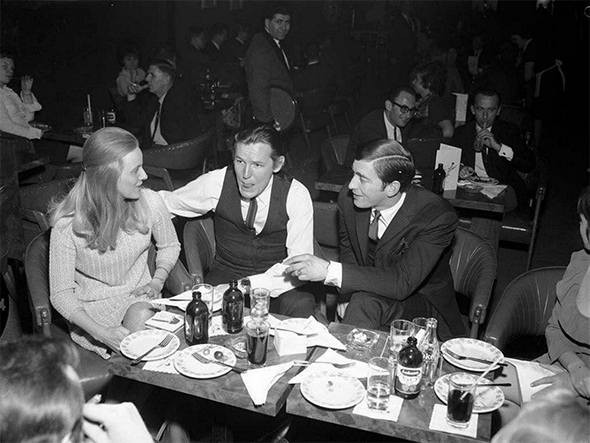
These names would become legends. The venue also brought in international acts such as Simon & Garfunkel, James Taylor and Tom Rush (to name just a few).
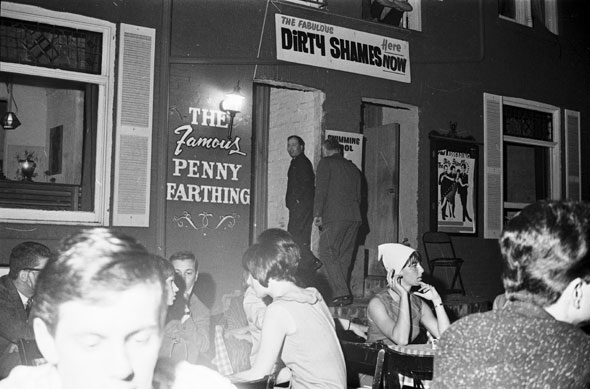
Every coffee house had something different. The Penny Farthing had waitresses in bikini tops while the Mynah Bird had glass encased Go-Go Dancers and featured the now infamous Rick James. Over at the Purple Onion, you might catch a performance by Buffy Sainte-Marie or Carly Simon.
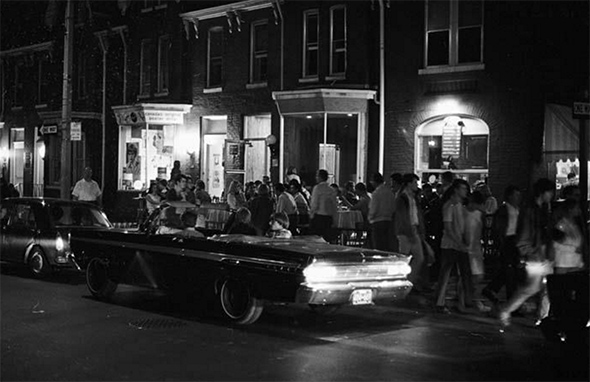
Yorkville was the place to be in the 1960s and crowds jammed the neighbourhood. Club lineups would spill out on to the sidewalks and swing around the block while cars clogged the streets. In response to the increase of vehicles and threat to pedestrian safety, locals took action.
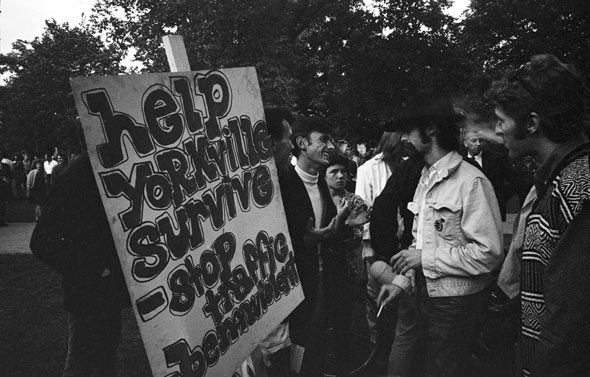
In May of 1967 a "love-in" was held at Queen's Park in support of shutting down traffic on Yorkville Avenue. Over 4,000 people attended. In August, peaceful protesters went one step further and organized a sit-in on Yorkville Avenue resulting in the arrest of 50 participants for traffic disruption.
Police presence increased - perhaps mainly in response to Ontario MPP Syl Apps' accusation that Yorkville was a "festering sore in the middle of the city." Soon a paddy wagon was parked in the neighbourhood on the weekends and a 10pm curfew was enforced for those under 18.
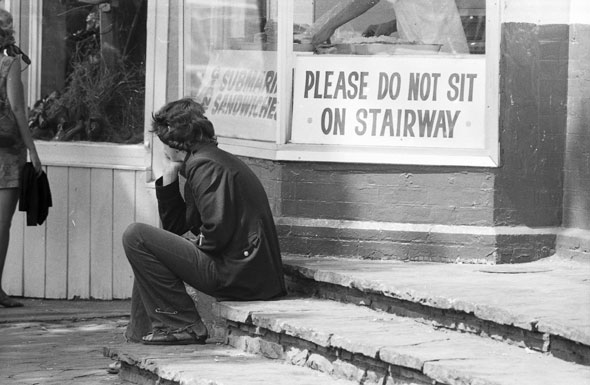
And so began the quick decent of the hippie revolution in Yorkville. By the following summer biker gangs had moved into the neighbourhood selling drugs, and reports of an outbreak of 'hippie hepatitis' prompted the opening of vaccine stations on the sidewalks. As a result, many locals left the area.
Not long after, the construction of the Bloor-Danforth subway increased land values and department stores replaced local shops. Within the blink of an eye, Yorkville transitioned into the monster of gentrification we now know today.
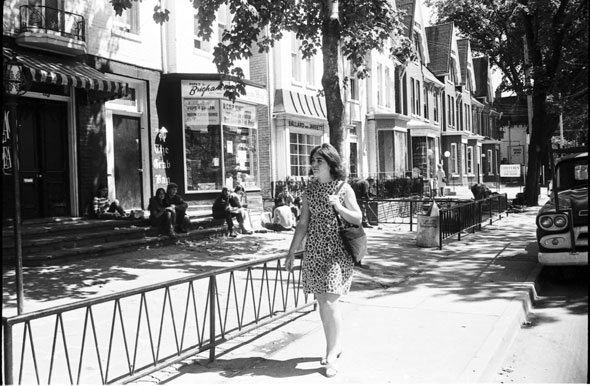
The next time you find yourself in Yorkville staring at the window displays of another flagship store, make sure to pause.
Remember that this was once the mecca of beatnik culture, where some of the most unconventional ideas, sensational nights and greatest musicians once got their start. May the spirit of the sixties live on.
Writing by Celina Johnson. Photos from the Toronto Archives, York University Archives Clara Thomas Archives & Special Collections.
Copyright protected material on this website is used in accordance with 'Fair Use', for the purpose of study, review or critical analysis, and will be removed at the request of the copyright owner(s). Please read Notice and Procedure for Making Claims of Copyright Infringement.
Added to Library on August 20, 2016. (5804)
Comments:
Log in to make a comment